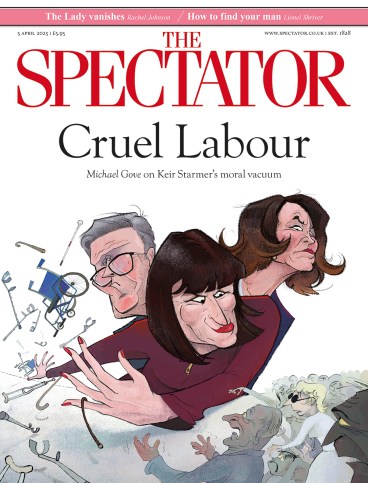
When Leonardo da Vinci’s ‘Salvator Mundi’ was sold in 2017 for $450 million it caused a sensation. Dismissed as an anonymous ‘wreck’ just 12 years before, it had become the single most expensive artwork ever to come to auction. Newspapers – goggle-eyed at the price – hailed the discovery of a ‘lost’ Leonardo. The Louvre wanted to make it the centrepiece of a major exhibition. There was even talk of showing it alongside the Mona Lisa. It seemed almost too good to be true. And it was. Doubts were soon raised about the painting’s attribution. Amid a storm of controversy, it was quietly whisked away to a secret location. It hasn’t been seen since.
The ‘Salvator Mundi’ is in many ways a parable of our obsession with Leonardo. Almost no other artist today is as familiar or ubiquitous. And it’s no mystery why. We’re fascinated by him because he isn’t just a Renaissance artist. He’s something greater, more modern. He feels almost like a celebrity: a solitary genius, far ahead of his time, a scientist, an athlete, even a pioneer of fashion. If we didn’t know better, we could easily mistake him as someone from our own day: gay, vegetarian, agnostic. And the closer he seems to us, the closer we want to get to him – his life, his works, his personality. We can’t get enough. We queue for hours to take a selfie with the Mona Lisa. We buy tickets to virtual reality ‘Leonardo experiences’. We long for new discoveries – no matter how questionable their authenticity might be.
There’s only one problem. As Stephen Campbell argues in a searingly brilliant new ‘anti-biography’, almost nothing about this image of Leonardo stands up to scrutiny. In fact there isn’t much we can say about him with any certainty at all. Although he left behind thousands of pages of notes in his characteristic mirror writing, they contain remarkably little information about him. Apart from his illegitimate birth, his early life is almost a complete blur. About one-third of his paintings are without supporting records. And his personality is largely a mystery.
What his notes do tell us is not always what we expect. He certainly wasn’t trying to be ‘ahead of his time’. As Campbell stresses, he lived very much in – and for – the moment. He frittered his money away on frivolities, such as when he bought a cape which had once belonged to Cesare Borgia for his pupil and (according to some) his lover. Nor was he a solitary genius. The very idea is anachronistic. Everything he did was mediated through a tangled web of friends, neighbours, assistants and patrons – so much so that his ‘self’ was effectively a social construct.
Often, what we think we know about Leonardo has come from reading too much into what he did not say. Take his vegetarianism. Although it is possible that he may have followed a vegetarian diet, there is no direct evidence either way. All we have is a fleeting comment by a Florentine contemporary to the effect that he didn’t like hurting animals. Even this seems difficult to credit. Leonardo’s household accounts show that, in the period 1498-1504, he spent more on meat and wine than anything else.
So where does the modern image of Leonardo come from? Part of the responsibility lies with later Renaissance biographies. Almost everything we ‘know’ about Leonardo’s early life and habits comes from texts written decades after his death which subordinated truth to verisimilitude and only rarely corroborated one another on the detail. His supposedly extravagant fashion sense, for example, comes from a single sentence in the manuscript of Anonimo Gaddiano (c.1540), which describes him wearing a knee-length garment instead of the longer clothes then in vogue. But Campbell stresses that even greater blame belongs to 19th-century biographers. -Walter Pater openly admitted that his portrait of Leonardo in The Renaissance (1873) was largely an ‘imaginary creation’ – a ‘legend’ invented to fill out the gaps in the evidence.
Since then, of course, Leonardo scholarship has advanced by leaps and bounds. But it has rarely been given its due. Precisely because the popular appetite for Leonardo is so strong, scholars wishing to reach a wider audience often feel under pressure to make their research fit our preconceptions. Rather than challenging hoary old myths, this only ends up perpetuating them – much to the detriment of scholarship itself.
Campbell is rightly scathing about the ‘Da Vinci Worlds’ – the blockbuster exhibitions, the ‘reconstructions’ of his machines, the Netflix documentaries – which foster the distorting Leonardo industry. At times, he even verges on the polemical. This occasionally distracts from his argument. But it does nothing to weaken its force. Campbell is unfailingly authoritative and compelling. And in so expertly skewering the legends about this most famous of artists, he has given us a Leonardo who is infinitely more fascinating – and unfamiliar – than ever before.







Comments